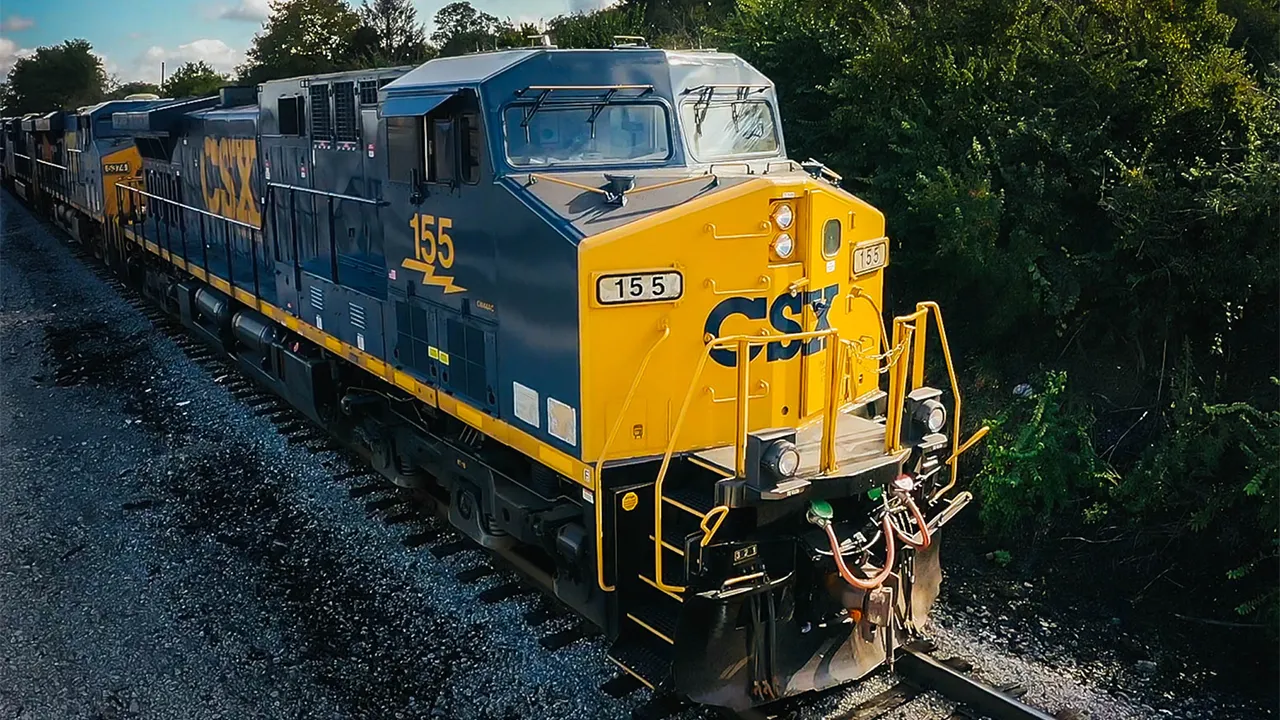
CSX Advances Labor Relations with Tentative Agreement for Locomotive Engineers
CSX Corporation (NASDAQ: CSX), one of the leading Class I freight railroads in North America, has announced the successful negotiation of a groundbreaking tentative agreement with the Brotherhood of Locomotive Engineers and Trainmen (BLET). This five-year single-system agreement covers approximately 3,400 locomotive engineers across CSX’s network and marks a significant milestone in the company’s ongoing efforts to modernize and harmonize labor relations across its operations.
The agreement is the first of its kind reached between BLET and any Class I freight railroad, underscoring CSX’s role as a pioneer in transforming labor negotiations in the freight rail industry. The announcement reflects a broader strategy under CSX leadership to create a more collaborative, stable, and forward-looking relationship with its organized labor partners.
A Transformational Approach to Collective Bargaining
Joe Hinrichs, President and Chief Executive Officer of CSX, emphasized the importance of this tentative agreement and acknowledged the professionalism and dedication of BLET leadership in the negotiation process.
“I want to thank the leaders at BLET, especially our CSX General Chairmen, for their hard work and professionalism in representing CSX employees and their union members,” said Hinrichs. “The tentative agreement, reached after months of negotiations, offers competitive pay, improved health care for locomotive engineers, and work rule changes that promote predictable assignments and additional quality-of-life enhancements.”
This agreement is a continuation of CSX’s industry-leading approach to labor negotiations. Over the past several years, the company has prioritized long-term labor stability by addressing key issues facing its workforce, such as compensation, healthcare, scheduling, and overall work-life balance. By seeking a comprehensive and unified contract structure, CSX aims to reduce fragmentation across its labor agreements, which have historically varied by region and craft.
Key Elements of the Tentative Agreement
While the full text of the agreement has not yet been released, CSX disclosed that the terms reflect the same general wage increases and enhancements to health and welfare benefits that were negotiated with 13 other unions over the past nine months. These improvements include:
- Competitive Wage Increases: Structured wage growth over the life of the agreement, reflecting market trends and inflationary pressures, ensuring fair compensation for locomotive engineers.
- Improved Healthcare Coverage: Enhanced medical and wellness benefits aimed at reducing out-of-pocket expenses and improving access to care for employees and their families.
- Work Rule Reforms: New policies aimed at creating more predictable work schedules and better job assignment structures, addressing a long-standing concern among train crews who often face unpredictable hours and extended time away from home.
- Quality of Life Enhancements: Additional provisions designed to improve work-life balance, including measures related to rest periods, time-off policies, and work environment improvements.
These features align with broader goals in the rail industry to not only attract but also retain talent in a tight labor market, particularly in demanding roles such as that of the locomotive engineer.
Progress in Labor Relations
The tentative agreement with BLET is especially significant given the pivotal role locomotive engineers play in CSX’s daily operations. This group represents approximately 20 percent of the company’s frontline unionized workforce, making them one of the most influential and operationally critical crafts within the organization.
If ratified, the new contract will bring the share of CSX’s unionized employees working under new or updated agreements to nearly 75 percent. This represents a notable acceleration in collective bargaining progress for the company. Currently, 54 percent of CSX’s unionized workforce is covered by ratified agreements that have been finalized within the last nine months.
The momentum behind these recent agreements is part of a broader shift in how CSX approaches employee engagement and labor relations. Under Hinrichs’ leadership, CSX has sought to build a more transparent and mutually beneficial dialogue with unions, moving away from historically adversarial dynamics toward cooperative, long-term problem-solving.
Next Steps: Ratification and Implementation
The tentative agreement now moves to the BLET membership for ratification. The voting process is expected to take place in the coming weeks. If approved, the agreement will become binding and set a new standard for CSX’s treatment of locomotive engineers.
For both CSX and BLET, ratification would represent a validation of their collaborative efforts and could set a precedent for similar agreements in the future. It also provides a model that other railroads may look to as they navigate their own labor negotiations in the current economic climate.
Remaining Bargaining Frontiers

Despite this major milestone, CSX still has work ahead in its quest to align labor agreements across its entire network. The only major remaining union group without either a ratified or tentative new agreement is the trainmen and conductors represented by the Sheet Metal, Air, Rail, and Transportation Workers – Transportation Division (SMART-TD).
CSX is currently engaged in active bargaining with SMART-TD to develop a single-system agreement that would unify separate contracts and workforces across different geographical territories. Conductors and trainmen make up another significant portion of CSX’s operational workforce, and securing a unified agreement with SMART-TD would mark the completion of a major labor unification effort within the company.
“Bringing consistency to our labor agreements is a top priority,” said a CSX spokesperson. “We believe that a harmonized approach not only strengthens our operations but also delivers better, fairer outcomes for our employees. We remain committed to working constructively with SMART-TD to achieve a mutually beneficial agreement.”
A Broader Industry Context
The announcement of the CSX-BLET tentative agreement comes at a time of renewed national focus on rail labor relations. Over the past two years, labor unrest in the rail industry—including the threat of nationwide strikes—has highlighted the urgent need for structural reform in how the major carriers engage with their unions.
Key issues such as crew fatigue, unpredictable scheduling, and healthcare costs have become flashpoints in the industry. In this context, CSX’s deal with BLET could help establish a new benchmark for other Class I railroads as they navigate their own labor landscapes.
Moreover, labor relations in the freight rail sector are closely watched by policymakers, shippers, and investors alike, given the critical role rail plays in national and global supply chains. By proactively addressing workforce concerns through comprehensive and collaborative agreements, CSX is helping to position itself as a reliable partner in the logistics ecosystem.
A Step Forward for Rail Labor Relations
The tentative five-year agreement between CSX and BLET represents more than just a labor deal—it is a signal of evolving industry dynamics. As CSX continues to redefine how labor negotiations are conducted in freight rail, it is also laying the foundation for a more sustainable and resilient workforce.
For employees, this agreement promises real improvements in pay, benefits, and job predictability. For CSX, it means greater operational continuity and enhanced employee morale. And for the industry at large, it provides a model of what labor relations can look like when mutual respect and long-term thinking guide the conversation.
Pending successful ratification by BLET members, this agreement could serve as a new gold standard for union negotiations across the U.S. rail sector.

